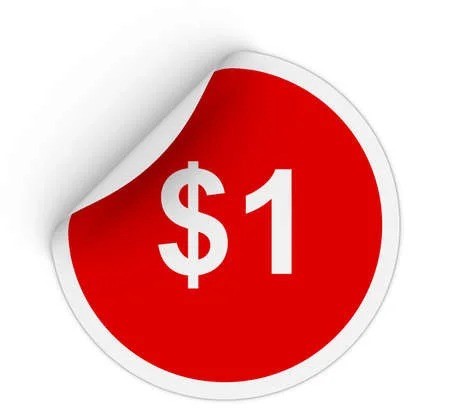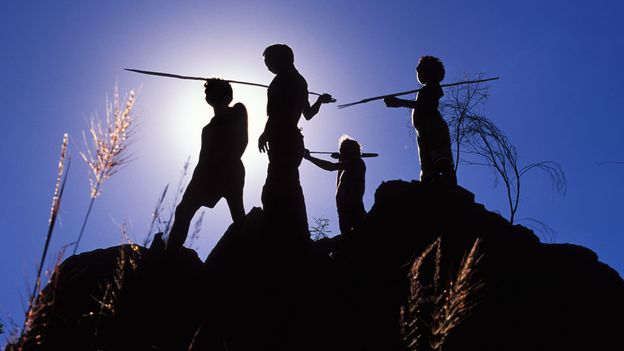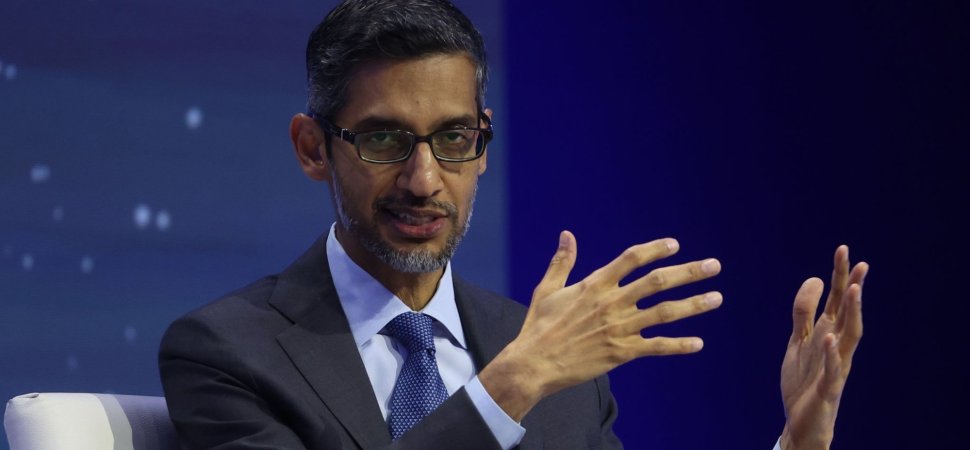| ? |
 |
|
Don't like ads? Go ad-free with TradeBriefs Premium    
CEO Picks - The best that international journalism has to offer!  S13 S13Why Marketers Are Returning to Traditional Advertising   Pundits have long predicted the demise of traditional advertising. However, it is alive and well and headed for growth for the first time in a decade. The authors explain seven factors driving this trend, including the ability of traditional ads to break through digital clutter, the decline in third-party cookies, and more.
Continued here
|
| ? |
 |
 S1 S1Startups, It's Time to Think Like Camels -- Not Unicorns   Covid-19 and the global recession it has caused have us all girding for a long period of extremely challenging conditions in the global market. This situation is uncharted waters for the traditional Silicon Valley startup model, which is geared toward fast growth and creating “unicorns.” Instead of the unicorn, the camel is the more fitting mascot. Camels can survive for long periods in extremely adverse conditions. Startup camel enterprises offer businesses in all industries and sectors valuable lessons on how to survive and grow in adverse conditions. They do this with three strategies in mind: they execute balanced growth; they take a long-term outlook; and they weave diversification into the business model.
Continued here
|
| ? |
 |
 S2 S2Considering a Start-Up? Think Again.   It’s been a banner year for start-ups. With the JOBS Act, the rise of international accelerators, the upcoming Facebook IPO, and the mind-blowing $1 billion Instagram acquisition, you can be sure that droves of young, ambitious founders will be jumping on the start-up bandwagon. The refrain is all too familiar: If you want to change […]
Continued here
|
| ? |
 |
|
| ? |
 |
|
|
 S3 S36 Signs You're Living in an Entrepreneurial Society   In his landmark 1985 book, Innovation and Entrepreneurship, famed author and educator Peter Drucker wrote about an entrepreneurial society and its impact on economic development. “Entrepreneurship rests on a theory of economy and society,” he wrote. “The theory sees change as normal and indeed as healthy. And it sees the major task in society — and especially in the economy — as doing something different rather than doing better what is already being done.” What does it mean, then, to live in a society that is becoming more entrepreneurial? I see six major signs:
Continued here
|
 S4 S4SPACs: What You Need to Know   Special purpose acquisition companies, or SPACs, have been around in various forms for decades, but during the past two years they’ve taken off in the United States. In 2019, 59 were created, with $13 billion invested; in 2020, 247 were created, with $80 billion invested; and in the first quarter of 2021 alone, 295 were created, with $96 billion invested. In 2020, SPACs accounted for more than 50% of new publicly listed U.S. companies.
Continued here
|
 S5 S5Chobani Founder Hamdi Ulukaya on the Journey from Abandoned Factory to Yogurt Powerhouse   Today Chobani is a global player and has more than 20% of the U.S. yogurt market. But it was a long, difficult journey (that began in an antiquated, abandoned yogurt factory in upstate New York) to get it there. CEO and founder Hamdi Ulukaya shares his thoughts on how to be a successful entrepreneur. He has always done things his own way. He wrote a piece for HBR nine years ago in which he said he was proud of the fact that Chobani didn’t have outside investors and that therefore he could run the company as he saw fit. Now Chobani is on track for an IPO, which means he’ll have plenty of new investors and outside scrutiny. Why the change? “In the early days, I wanted to have the freedom and flexibility to be able to make decisions fast and go forward,” he says. “Now we are in a place where the company is sizable, we have greater market share. Our growth is really, really good. And there’s still a long way to go. I celebrate people coming and being partners and being shareholders. It’s a perfect moment for us to be able to have others to come and join.”
Continued here
|
 S6 S6 S7 S7New Criteria for Market Segmentation   The director of marketing in a large company is confronted by some of the most difficult problems in the history of U.S. industry. To assist him, the information revolution of the past decade puts at his disposal a vast array of techniques, facts, and figures. But without a way to master this information, he can easily be overwhelmed by the reports that flow in to him incessantly from marketing research, economic forecasts, cost analyses, and sales breakdowns. He must have more than mere access to mountains of data. He must himself bring to bear a method of analysis that cuts through the detail to focus sharply on new opportunities.
Continued here
|
 S8 S8How Crowdsourcing a "Daily Twist" Paid Off for Nabisco   It’s easy to forget that companies have been inviting ideas from “the crowd” for a very long time. If you’re in doubt, read The Prize Winner of Defiance, Ohio, a memoir of 1950s America in which the author’s mother writes advertising jingles for contest after contest. Years before Jeff Howe coined and defined the term “crowdsourcing,” marketers knew its power.
Continued here
|
 S9 S9What's the Value of a Like?   In a series of experiments, the researchers tested four increasingly interactive ways in which Facebook might affect customers’ behavior. First, they explored whether liking a brand—passively following it—makes people more likely to purchase it. Second, they examined whether people’s likes affect their friends’ purchasing. Third, they looked at whether liking affects things other than purchasing (for example, whether it can persuade people to engage in healthful behaviors). And fourth, they tested whether boosting likes by paying to have branded content displayed in followers’ news feeds increases the chances of meaningful behavior change.
Continued here
|
 S10 S10The Organizational Reasons Police Departments Don't Change   In early July 2016, police officers killed black men in two separate, high-profile incidents. First, Alton Sterling was shot at point blank range in front of a convenience store in Baton Rouge, Louisiana. And in Minnesota, during a minor traffic stop, a police officer shot Philando Castile as he reached for his license.
Continued here
|
 S11 S11How Companies Can Meet the Needs of a Changing Workforce   The modern workplace is currently experiencing two intertwined trends: rising life expectancies have extended career trajectories by decades, while improvements in gender equality have led more women to enter the workforce than ever before. What will it take for companies to keep up with these demographic shifts? In this piece, the author offers a three-step plan for companies looking to adapt and support emerging career paths: First, build awareness within the organization around your current situation (and areas for improvement) by tracking both gender and age balance. Second, normalize flexible career path options, such as sabbaticals, parental leaves, and other detours from traditional full-time employment. Finally, make sure that internal and external communications reflect a mindset that recognizes and encourages these options. Ultimately, everyone benefits from greater flexibility and diversity in the workplace — but it’s up to today’s business leaders to ensure we build a work environment that is supportive of these new realities.
Continued here
|
 S12 S12Customers Will Pay More for Less   The finding: Consumers will pay more for a single expensive item, such as a watch, than they will for a combination of that item and a cheaper one, such as a pen. The research: In five experiments, respondents were shown a series of products—phones, jackets, backpacks, TVs, watches, shoes, luggage, bikes, wine, and sunglasses. Some […]
Continued here
|
 S14 S14 S15 S15What Ron Johnson Got Right   Ron Johnson’s 17-month tenure as J.C. Penney’s CEO was a catastrophe — an assessment captured in the coverage of his ouster this week: “Former Apple Retail Guru Dumped;” “How Ron Johnson Made JCPenney Even Worse;” and my favorite: “I Am Become Ron Johnson, Destroyer of Worlds.” It’s true. Under Johnson’s leadership, Penney’s share price plunged by half and the company lost $4 billion in sales.
Continued here
|
 S16 S16Innovating by Making the World a Better Place   Maggie Brenneke, director of the Skoll Social Enterprise Program at SustainAbility. When businesses consider their social and environmental bottom lines, they identify new opportunities to innovate. Some of those opportunities can be surprising!
Continued here
|
 S17 S17Teams Solve Problems Faster When They're More Cognitively Diverse   Looking at the executive teams we work with as consultants and those we teach in the classroom, increased diversity of gender, ethnicity, and age is apparent. Over recent decades the rightful endeavor to achieve a more representative workforce has had an impact. Of course, there is a ways to go, but progress has been made.
Continued here
|
 S18 S18Research: When -- and Why -- Employee Curiosity Annoys Managers   Researchers conducted a series of studies to understand when curiosity may lead to different reactions in the workplace. They found that curious employees were often seen by their leaders as insubordinate and, in turn, less likable. However, curious employees who were politically skilled were not seen this way. They distinguished between constructive curiosity, which involved seeking information, knowledge, or learning by asking many provocative questions that don’t have easy answers, and unconstructive curiosity, which involved seeking information, knowledge, or learning by asking too many questions and questions with easy answers. Their findings have implications for both managers, who should ensure they’re not dismissing employees expressing constructive curiosity, and employees, who should ensure they’re not engaging in unconstructive curiosity.
Continued here
|
 S19 S19 S20 S20The Successor's Dilemma   A well-regarded CEO approaches retirement age. He knows it is only responsible to designate a successor, and the board agrees wholeheartedly. Together, they screen internal candidates but decide that none possesses all the skills necessary to propel the company forward. Soon, a bright star is hired from outside the company—with the assurance that if he performs well, he will ascend to the top spot in two or three years.
Continued here
|
 S21 S214 Strategies to Secure a Corporate Board Seat   To understand how people who are historically underrepresented on corporate boards successfully landed their seats, the author recruited 12 Black female public corporate directors to discuss their career paths and process of being recruited. His conversations revealed that recruiters and boards tend to look for and pre-vet C-suite candidates who resemble current and past directors. This makes it even more critical that candidates from underrepresented backgrounds build a robust and healthy social network filled with individuals who know you — and know what you want to accomplish. He recommends four strategies to accomplish this: 1) Demonstrate your ability to add value; 2) Gain board exposure; 3) Be your own best advocate; and 4) Build and nurture your network.
Continued here
|
 S22 S22Managers Can Drive Their Subordinates Mad   Managers, no less than other people, have personality quirks. Little things they do on occasion drive their subordinates “up the wall.” In the main, however, subordinates tolerate their manager’s quirks because for the most part the manager’s style is acceptable and for many subordinates it is much more than that. But what happens to subordinates when a manager seems to be all quirks, when there is no in-between?
Continued here
|
 S23 S23How to Improve Your Decision-Making Skills   We are faced with the need to make decisions every day. Should we bring product A or B to market? Which marketing strategy should we use? Of the choices that we have available, who is the best person to hire or who would make the best partner? In each case, we try to rely on as many facts as we can so that we can make a reasonable estimation of the best path to follow. At first glance, the approach of weighing the evidence rationally seems perfectly reasonable. Yet, in so many instances, rational predictions fail. Why is that? And what can we do about it?
Continued here
|
 S24 S24 S25 S25 S26 S26 S27 S27 S28 S28 S29 S29Taupo: The super volcano under New Zealand's largest lake   Located in the centre of New Zealand's North Island, the town of Taupo sits sublimely in the shadow of the snow-capped peaks of Tongariro National Park. Fittingly, this 40,000-person lakeside town has recently become one of New Zealand's most popular tourist destinations, as hikers, trout fishers, water sports enthusiasts and adrenaline junkies have started descending upon it.The namesake of this tidy town is the Singapore-sized lake that kisses its western border. Stretching 623sq km wide and 160m deep with several magma chambers submerged at its base, Lake Taupo isn't only New Zealand's largest lake; it's also an incredibly active geothermal hotspot. Every summer, tourists flock to bathe in its bubbling hot springs and sail through its emerald-green waters. Yet, the lake is the crater of a giant super volcano, and within its depths lies the unsettling history of this picturesque marvel.
Continued here
|
 S30 S30Message sticks: Australia's ancient unwritten language   The continent of Australia is home to more than 250 spoken Indigenous languages and 800 dialects. Yet, one of its linguistic cornerstones wasn't spoken, but carved.Known as message sticks, these flat, rounded and oblong pieces of wood were etched with ornate images on both sides that conveyed important messages and held the stories of the continent's Aboriginal people – considered the world's oldest continuous living culture. Message sticks are believed to be thousands of years old and were typically carried by messengers over long distances to reinforce oral histories or deliver news between Aboriginal nations or language groups.
Continued here
|
 S31 S31Did Australia's boomerangs pave the way for flight?   The aircraft is one of the most significant developments of modern society, enabling people, goods and ideas to fly around the world far more efficiently than ever before. The first successful piloted flight took off in 1903 in North Carolina, but a 10,000-year-old hunting tool likely developed by Aboriginal Australians may have held the key to its lift-off. As early aviators discovered, the secret to flight is balancing the flow of air. Therefore, an aircraft's wings, tail or propeller blades are often shaped in a specially designed, curved manner called an aerofoil that lifts the plane up and allows it to drag or turn to the side as it moves through the air.
Continued here
|
 S32 S32Why Does a Solar Eclipse Move West to East?   Here’s why the path of a solar eclipse travels in the opposite direction of that of the sunThe sun rises in the east and sets in the west. A glimpse at the map of the April 2024 North American solar eclipse, however, shows a path from west to east. What gives?
Continued here
|
 S33 S33 S34 S34 S35 S35 S36 S36 S37 S37 S38 S38 S39 S39 S40 S40UK's "DragonFire" laser weapon downs its first drones   A high-powered laser weapon under development in the UK just shot down its first drones — putting the futuristic device a major step closer to the battlefield.The background: Laser weapons — powerful, destructive beams of light — are arguably the “next big thing” in defense tech, thanks to their numerous benefits over traditional kinetic energy weapons, like missiles or guns.
Continued here
|
 S41 S41Tesla's pigeon: How the great inventor fell for a bird   On a February morning in 1935, a disoriented homing pigeon flew into the open window of an unoccupied room at the Hotel New Yorker. It had a band around its leg, but where it came from, or was meant to be headed, no one could say. While management debated what to do, a maid rushed to the 33rd floor and knocked at the door of the hotel’s most infamous denizen: Nikola Tesla. “Dr. Tesla … dropped work on a new electrical project, lest his charge require some little attention,” reported The New York Times. “The man who recently announced the discovery of an electrical death-beam, powerful enough to destroy 10,000 airplanes at a swoop, carefully spread towels on his window ledge and set down a little cup of seed.”
Continued here
|
 S42 S42Starts With a Bang podcast #102 - The missing exoplanets   Up until the early 1990s, we didn’t know what sorts of planets lived around stars other than our Sun. Were they like our own Solar System, with inner, rocky planets close to our star and large, giant worlds farther away? It turned out that exoplanetary systems come in a great variety of configurations: with planets of all sizes, masses, and distances from their parent stars. But some configurations are more common than others.There are lots of hot Earth-sized planets and lots of hot Jupiter-sized planets, but precious few “hot Neptune” worlds out there. Furthermore, there appear to be lots of Earth-sized and super-Earth-sized worlds at greater distances, as well as many Neptune-sized and mini-Neptune-sized worlds. However, there’s a gap there, too: between the large super-Earths and the small mini-Neptunes. Where are these missing exoplanets? Or, rather, why are these classes of exoplanets so uncommon?
Continued here
|
 S43 S43 S44 S44 S45 S45What Has Happened to the Rule of Law in India?   On December 11, India’s supreme court upheld ending the constitutional privileges of the Indian-controlled province of Kashmir, a disputed region claimed by both India and Pakistan. The decision was a sobering example of the Indian judiciary’s creeping servility in the era of Prime Minister Narendra Modi. Just as India’s vibrant, secular democracy is transforming into an authoritarian, ethnonationalist state, the supreme court, once vaunted for its fierce independence, is failing to stand up for the rule of law.The Kashmir ruling is the resolution of a case that began in 2019. In a brazen and theatrical move that year, Modi’s government scrapped Article 370 of the Indian constitution, which gave Kashmir—the only Muslim-majority province in India—autonomy and special privileges relative to other states. Article 370 was a condition of Kashmir’s accession to India in 1947, toward the end of British colonial rule. The move to revoke its provisions was seen by many legal experts as illegal and unconstitutional, and more than a dozen petitioners, including private citizens, activists, and political parties, challenged the decision in India’s supreme court.
Continued here
|
 S46 S4617 Indie Films You Must See in 2024   Time travel, Sasquatches, Kristen Stewart in a mullet—here are our favorite movies from this year’s Sundance Film Festival.Navigating the Sundance Film Festival can be a tricky endeavor. The stacked screening schedule is practically made to send cinephiles into a tailspin: If the line for the new Steven Soderbergh movie starts forming at 9 p.m., but a nifty-sounding documentary is playing across town at six, can you make it to both? Is it better to go for the crowd-pleaser or for the polarizing experience? Which of the 91 films selected will become this year’s Past Lives?
Continued here
|
 S47 S47Northern Alaska Is Running Out of Rocks   Every year, millions of migratory birds flock to Alaska. Hundreds of thousands of caribou use the tundra, rich in plant life, as their calving grounds. Alaska’s North Slope is also rich in other natural resources: oil, gas, minerals. But one important thing is lacking: rocks. “Yes, gravel is a precious commodity on the North Slope,” says Jeff Currey, an engineer with the state’s Department of Transportation and Public Facilities who works in the agency’s Northern Region Materials Section. For decades, Currey says, the state has been searching for gravel all over the North Slope, with limited success.Gravel is essential for all kinds of long-term development: building projects, road construction, runways, and other major infrastructure. “There’s a big need for gravel, and not a lot of it, is really what it comes down to,” says Trent Hubbard, a geologist with the Alaska Department of Natural Resources’ Division of Geological and Geophysical Surveys.
Continued here
|
 S48 S48How Relationships Grow, and How They Break   Reading about others’ experiences can help us navigate the complexities of love and care.This is an edition of The Wonder Reader, a newsletter in which our editors recommend a set of stories to spark your curiosity and fill you with delight. Sign up here to get it every Saturday morning.
Continued here
|
 S49 S49What Does Iran Want?   Earlier this week, President Joe Biden told reporters that he had decided how the U.S. will respond to the Iran-backed militia drone attack that killed three American soldiers in Jordan on Sunday. The Biden administration has made it clear that the U.S. does not want war with Iran; any plans to retaliate could further escalate tensions in the Middle East.It’s unclear if the mounting foreign conflicts will spill over into the voting booth as Americans head toward a potential Biden-Trump rematch this November.
Continued here
|
 S50 S50The Apple Vision Pro Is Spectacular and Sad   “I am crying,” my editor said when I connected with her via FaceTime on my Apple Vision Pro. “You look like a computer man.”What made her choke with laughter was my “persona,” the digital avatar that the device had generated when I had pointed its curved, glass front at my face during setup. I couldn’t see the me that she saw, but apparently it was uncanny. You look handsome and refined, she told me, but also fake.
Continued here
|
 S51 S51Favorite Books of 2023   To look back on a year of reading is to be handed a clear mirror of your priorities and passions, of the questions that live in you and the reckonings that keep you up at night. While the literatur…
Continued here
|
 S52 S52Why Your Business Might One Day Accept Bitcoin (or Something Like It)   Every day seems to bring a new headline about Bitcoin, the digital currency first created in 2008 by the pseudonymous programmer Satoshi Nakamoto. Yesterday’s news that Mt. Gox, the largest Bitcoin exchange in the world, will file for bankruptcy owing to the theft of nearly six percent of the world supply of bitcoins is a reminder that the digital currency is far from ready for primetime.
Continued here
|
 S53 S53Is Your Job AI Resilient?   Leading Wall Street research firm Evercore ISI, in collaboration with venture studio Visionary Future, embarked on a comprehensive study to understand the profound effects of Generative AI on businesses, the broader economy, and its integration into future workforces. They conducted an in-depth analysis of over 160 million jobs in order to produce analytical insight to help leaders navigate this change. With AI’s influence, their projections suggest a potential resurgence in global GDP growth, envisioning a substantial boost to the global economy by 2032. The authors predict that AI will emerge not merely as a technological marvel, but as a beacon of hope in addressing demographic and productivity challenges. This article covers analysis on which jobs will be most affected by AI, including which stand to benefit the most from augmentation by AI.
Continued here
|
 S54 S54 S55 S55How the Metaverse Could Change Work   The workplace of the 2020s already looks vastly different from what we could have imagined just a couple of years ago. Now, the metaverse promises to bring new levels of social connectedness, mobility, and collaboration to a world of virtual work. The metaverse is poised to reshape the world of work in at least four major ways: new immersive forms of team collaboration; the emergence of new digital, AI-enabled colleagues; the acceleration of learning and skills acquisition through virtualization and gamified technologies; and the eventual rise of a metaverse economy with completely new enterprises and work roles. The metaverse also opens up new possibilities to rethink the office and work environment, introducing elements of adventure, spontaneity, and surprise. A virtual office doesn’t have to be a drab, uniform corporate environment downtown: why not a beach location, an ocean cruise, or even another world? Our work colleagues in the metaverse will not be limited to the avatars of our real-world colleagues. Increasingly, we will be joined by an array of digital colleagues — highly realistic, AI-powered, human-like bots. The metaverse could also revolutionize training and skills development, drastically compressing the time needed to develop and acquire new skills. While still in its early stages, the emergent metaverse provides an opportunity for enterprises to reset the balance in hybrid and remote work, to recapture the spontaneity, interactivity, and fun of team-based working and learning, while maintaining the flexibility, productivity, and convenience of working from home.
Continued here
|
 S56 S56How Leading Companies Build the Workforces They Need to Stay Ahead   Digital transformation, the industrial Internet, advanced analytics, artificial intelligence, robotics, machine learning and a plethora of other innovations are fundamentally changing the nature of work. The impact of technology will be felt over time, and not overnight, creating the illusion there is time to react. But building a winning workforce for tomorrow starts today. The best-performing companies are already taking steps to attract new talent and widen their lead over rivals. They delineate the skills and capabilities needed to win in the future, identify gaps, and aggressively fill the gaps. Even as strategies, business models, and needed skills and capabilities continue to change as new technologies emerge, successful companies don’t wait to upgrade their workforce.
Continued here
|
 S57 S57The Gamer Disposition   Today’s multiplayer online games are large, complex, constantly evolving social systems. Their perpetual newness is what makes them enticing to players. Each generation of games begets Browse the entire HBR List.Listen to the podcast.Take the poll. a new generation of participants who develop what we call the gamer disposition. It’s exactly the disposition you should […]
Continued here
|
 S58 S58Marketing When Budgets Are Down   The general rule of enterprise finance is that marketing budgets drop like a stone at the first sign of trouble and rise like a feather once the environment is more settled. In mid-2023 we’re far from a settled state — projected GDP growth in western markets is depressingly flat, inflation is proving to be rather stubborn, and those disruptions just keep on coming. It’s tough to see a significant increase in marketing budgets in the near term. Gartner’s annual survey of hundreds of CMOs charts the evolution of marketing spending over recent history, offering guidance for how enterprise leaders can deliver results and build the capabilities to fuel growth in a time of less.
Continued here
|
 S59 S59Three Questions Leaders Must Ask About Their Company   Too often we see character, certainly in management circles, in reference to lack of it. That is, some CEO or CFO or senior executive has been caught with his hand in the kitty or in the knickers of some subordinate. Character, as our parents tell us, is what you do when you think no one is looking. Therefore, cheaters cheat; liars lie; but the converse is also true; faithful remain so and truthful tell the truth.
Continued here
|
 S60 S605 Principles of Purposeful Leadership   The traditional model of the leader-hero who saves the day, knows it all, is the smartest person in the room, and is too often driven by power, fame, glory, or money is not appropriate in today’s environment. People today expect a different kind of leader. While each company needs to define its own leadership point of view, the author presents five attributes that characterizes leaders who are able to unleash the kind of human magic you see at work at some of the most high-performing companies. First, be clear about your purpose. Second, be clear about your role. Third, be clear about whom you serve. Fourth, be driven by values. Finally, be authentic.
Continued here
|
 S61 S61 S62 S62The Timeless Lessons of "Mr. Swatch"   I was sad to read the news that Nicolas G. Hayek — one of Europe’s most colorful entrepreneurs, and one of the most charismatic CEO’s I’ve ever met — died this past Monday at the age of 82. I take comfort in the fact that the leader of Switzerland’s Swatch Group passed away in his office at Swatch headquarters outside Berne, the Swiss capital. Knowing Hayek as I did, I know he died doing what he loved. He was a dreamer and an innovator to his last breath.
Continued here
|
 S63 S63Ending the Shareholder Lawsuit Gravy Train   The Supreme Court is going to host a debate next week on the efficient market hypothesis. The battle lines may not be exactly what you’d expect: the U.S. Chamber of Commerce and Justice Samuel Alito have already argued that the EMH is, as Alito put it, “a faulty economic premise,” while Justice Ruth Bader Ginsburg and the Obama administration have backed the idea that, as a sextet of Justice Department lawyers put it, “markets process publicly available information about a company into the company’s stock price.”
Continued here
|
 S64 S64The Dangers of Becoming Too Dependent on a Single Customer   In managing customer relationships — or relationships with any key stakeholders — it is critical to manage the balance of power between the company and any one customer. This can be done by diversifying the customer base, understanding (and be willing to use) customer pressure points, and (in the case where a company is locked into a single key relationship) to ensure that the customer is as dependent on the company as the company is dependent on the customer.
Continued here
|
 S65 S654 Strategies to Cultivate an Authentic Corporate Purpose   In today’s corporate sphere, a growing disparity exists between companies’ declared values and their actions, leading to stakeholder skepticism. This divide prompts discussions about the feasibility of genuine societal contributions within capitalist frameworks. Companies can tread three paths: transactional (profit-focused), toxic (misaligned actions under a guise of societal benefit), or transcendent (true alignment of values and operations). This article introduces four pivotal strategies to help businesses achieve a transcendent purpose, ensuring a cohesive blend of profitability and genuine societal impact.
Continued here
|
 S66 S66The Globe: Finding Great Ideas in Emerging Markets   Too many companies in mature markets assume that the only reason to enter emerging countries is to pursue new customers. They fail to perceive the potential for innovation in those countries or to notice that a few visionary multinationals are successfully tapping that potential for much-needed ideas in products and services. Think of General Electric’s portable ultrasound technology and Intel’s inexpensive Classmate PC.
Continued here
|
 S67 S67 S68 S68An Entrepreneur's Guide to Surviving the "Death Valley Curve"   The so-called “death valley curve” represents a crucial early phase of new ventures, when substantial work on a new enterprise has begun but no sufficient revenue has been generated. During this period, companies deplete their initial capital in their quest to establish the business. To help navigate this tricky time, the authors have created a matrix with four phases of new entrepreneurial ventures and the strategic challenges in each phase.
Continued here
|
 S69 S6910 Ways to Prove You're a Strategic Thinker   To get ahead in the business world, it’s not enough to think strategically. You also have to effectively communicate those ideas. There are several ways to do this, including elevating the conversation to focus on the big picture and broader context, being forward-looking in your comments, anticipating the effects of potential decisions, connecting disparate concepts, simplifying complex issues, using metaphors and analogies, stimulating dialogue with questions, showing you are informed, actively listening, and seeking feedback.
Continued here
|
 S70 S70Obama and the High Cost of High Expectations   There’s an old saying that putting someone on a pedestal makes it a lot easier to get kicked in the head. I mention this because two years ago many voters put Barack Obama on a very high pedestal. Expectations went through the roof as crowds of people (even outside the U.S.) shouted that oft-repeated campaign slogan, “Yes we can!” For the first time in many years, Americans foresaw a president who would mobilize the nation to greatness. After the distress of the economic meltdown, Obama represented a fresh start, with new energy, excitement, and hope.
Continued here
|
 |
TradeBriefs Publications are read by over 10,00,000 Industry Executives About Us | Advertise Privacy Policy Unsubscribe (one-click) You are receiving this mail because of your subscription with TradeBriefs.
Our mailing address is GF 25/39, West Patel Nagar, New Delhi 110008, India |



























































































































































































